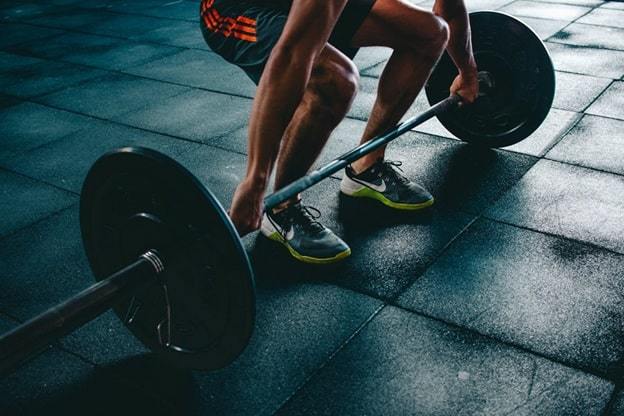Featured Image Caption: Weightlifting, Lifting, Bodybuilding
Jump to read...
Fitness instructors might benefit from a small set of practical items that support planning, delivery, and follow-up in everyday sessions. The focus usually stays on tools that assist movement, reduce confusion, and keep routines predictable for different clients. It could be helpful to think in broad categories rather than complex features. This approach may guide spending choices that remain flexible and adaptable. Decisions then can evolve as needs change.
Clothing and Footwear Basics for Consistent Movement
Choosing clothing and footwear that support movement is usually a starting point because comfort and durability often affect attention, posture, and energy across a full day. Materials that manage sweat and allow free motion could reduce distractions, while fit and stability may limit unnecessary strain during repetitive tasks. Surface and activity type affect footwear selection, thus it may change when classes and schedules change. Easy-to-wash and dry clothes simplify weekly routines and decrease downtime. This section can be rotated somewhat to balance cost and wear, and it can be checked seasonally to make sure objects are still working properly without clutter.
Useful Training Equipment and Aids for Clear Demonstrations
Basic training tools that match your session style might help with demonstrations, client feedback, and pacing, which could lead to smoother instruction even when groups change size or skill. Lightweight items that are easy to carry or store are often prioritized, since quick setup reduces idle time and keeps attention on form and safety rather than on logistics. It may be practical to begin with a narrow set of pieces that serve multiple functions, because this can keep bags manageable and spaces tidy. To avoid losing or mixing up shared gear, labels or checklists are occasionally utilized. Replacement plans, even informal ones, can be useful so worn tools are rotated out before they affect session quality, and this kind of routine can protect both consistency and client trust.
Audio and Communication Helpers That Support Attention
Clear sound during instruction often matters because cues and timing can be missed in busy spaces or outdoors, and this leads to uneven effort or uncertainty that distracts from form and pacing. A mini Bluetooth speaker can deliver clear audio for cues and timers, which supports a consistent rhythm while keeping hands free and setup simple. Clip-on accessories or protective cases might be considered if sessions move between locations, since travel can add minor risks that slow you down. Volume checks before a class starts are usually enough to prevent disruptions, and a short backup plan, like a printed timer or visual board, could cover rare failures. The goal stays practical, which means keeping a small audio kit that works quickly, travels easily, and does not require repeated adjustments during active segments.
Scheduling and Client Management Tools for Predictable Days
Session coordination can be improved with a basic scheduling setup that sends reminders, records attendance, and logs notes about progress or preferences, depending on your needs. Calendar tools that sync across devices may reduce missed appointments, while simple templates for onboarding or check-ins help information stay consistent and easy to find. You could consider separating private notes from client-facing summaries so updates remain clear and professional without extra work. It is often useful to assign repeat tasks, such as monthly plan reviews or equipment audits, to recurring entries that appear automatically. Data should be kept minimal yet workable, and it might be exported occasionally to prevent loss. The intention is orderly days where time blocks, travel, and recovery periods are visible enough to guide choices without creating complicated workflows.
Hygiene and Maintenance Supplies That Encourage Trust
Keeping items clean and ready for use is usually part of responsible practice, since shared surfaces and frequent contact can raise simple concerns that are easy to control with a small kit. Portable wipes, hand sanitizers, and gentle cleaners may fit into a single pouch that is carried between sessions and restocked at predictable intervals. A short routine that includes quick cleanups before and after classes could prevent build-up and save longer tasks for quieter windows. Storage bags or bins that separate used gear from ready gear help keep track of what needs attention. Clear labels and a basic rotation plan might extend the life of soft goods and prevent overlooked wear. This approach remains low effort but still signals care and reliability in a way clients usually notice.
Conclusion
This set of purchases can remain compact while still covering movement, communication, planning, and cleanliness, and such coverage might create steadier sessions with fewer preventable issues. Your choices could shift as locations, clients, and schedules change, yet the categories tend to stay the same over time. Aim for items that work often, store easily, and replace without stress. A small, reliable kit usually supports balanced days and clear instructions.
By Hannah Boothe
– is a freelance writer native to Northern California who spends her free time developing herself. Hannah enjoys the outdoors, she goes hiking whenever the weather permits and enjoys practicing yoga. She carves out time to journal and read whenever she can. She loves adventure and connecting with those around her.
Member since August, 2022
View all the articles of Hannah Boothe.



















Leave a Reply